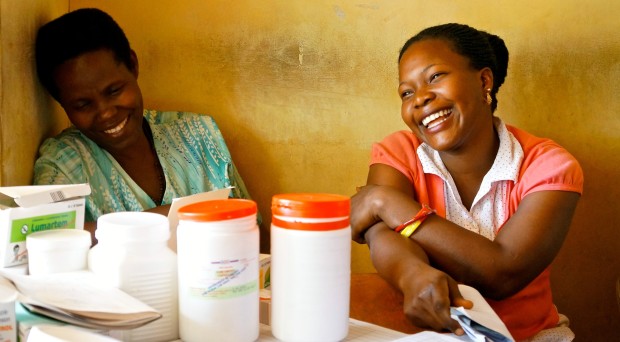
Over the last three years, I have been to eastern Democratic Republic of Congo multiple times. During my visits I have been struck by changes reported by health facility committee members in South Kivu.
“A warm welcome is reserved for patients by providers,” they said. “Indeed, the reception given to patients influences healing. We see that now providers demonstrate consideration for, esteem…for their patients… [we see] fair treatment of the sick.”
This was a remarkable change. They described a state not too long ago where people would be allowed to jump ahead in line due to their influence in society or relationships with nurses. That was before Tuungane came, they said. Tuungane is the International Rescue Committee’s largest community-driven reconstruction program, which is financed by the UK government.
Facilitating engagement
In an article recently published in the journal Conflict and Health, my colleagues and I explain how Tuungane uses a community scorecard (CSC) approach to facilitate engagement between users, their representatives, frontline health workers, and health district officials.
We found that impoverished and conflict-affected communities can take meaningful steps to address service delivery challenges. This seems possible if they know about their rights and entitlements, if they have an opportunity to discuss service delivery problems with frontline health care providers and if they are supported to implement locally available solutions.
I have also been struck by the lack of incentives and capacities for changes of frontline services providers and health facility committees.
The findings also show that health care workers, users, and their representatives can engage constructively with each other through the community scorecard approach. This process may also increase participation of health facility committees in promoting transparency and improving the management and maintenance of health facilities, service delivery performance, patient-provider relationships, and financial access to services.
However, during my most recent visits in Haut-Katanga and Tanganyika I have also been struck by the lack of incentives and capacities for changes of frontline services providers and health facility committees.
Resistance to change
While I have seen first-hand changes we report in our article, I have also attended town hall meetings where health workers ignore questions and changes being asked by service users which suggest a lack of willingness and perhaps active resistance to change.
I have also heard from frontline service providers and health facility committees about changes such as adding staff on payroll or increasing medical supplies that cannot find solutions locally which suggest a collective action ceiling.
But stories of change — like those in South Kivu — suggest that this is possible because health care providers act in response to information, community representatives and/or supervisors put pressure on them, and health facility committees and providers identify and implement joint actions.
Achieving the changes
We can play the role of brokers of change by convening a safe space for dialogue.
If I combine the qualitative evidence we present in our article with the experience I gained in eastern Congo, then it reminds me that locally-led development must start with people problem-solving together for solutions that fit their context.
We can play the role of brokers of change by convening a safe space for dialogue, for example, linking community members up with the right actor in the service delivery chain and injecting new resources in judicious ways.
In eastern Congo, International Rescue Committee achieved this through limited investments in physical facilities, basic inputs or technical assistance, given the near absence of means to deliver services in many locations.
Many frontline service providers, users and their representatives want change. With a little support, and trust building measures, they can map their own way towards achieving the changes they seek. But we also need to reconcile that not all local problems can be resolved with local solutions and that not all actors will engage willingly.
Comments